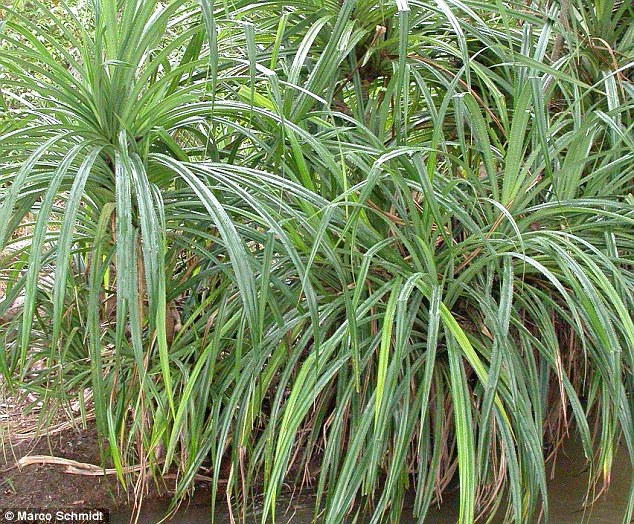Geologist Discovers Plant that only grows near Diamonds
 |
| Rare plant only grows over diamond deposits – and could make gemstone discovery much cheaper |
- A species of plant in Liberia could point towards the location of diamonds
A thorny and palm-like plant in West Africa could soon become a diamond hunter’s best friend.
That’s because the plant seems to grow only over rock that may contain the precious stones, scientists have discovered.
Known as Pandanus candelabrum, the plant enjoys soil that is rich in kimberlite, a type of igneous rock associated with diamonds.
P. candelabrum is found specifically in Liberia, and could become a key tool for diamond hunters.
Steven Shirey, a geologist and diamond expert at the Carnegie Institution for Science in Washington, D.C, told Science that prospectors would ‘jump on it like crazy.’
Other plants have been known to point to elements, like copper, which is commonly referred to as geobotany.
But this is thought to be the first species of plant known to grow over potential diamond mines.
Diamonds, which form hundreds of kilometres underground, are brought to the surface by kimberlite pipes.
Dr Stephen Haggerty from the Florida International University in Miami was the first to spot that the plant P. candelabrum seemed to grow on these rare pipes.
The pipes themselves can be fairly large – the one found by Dr Haggerty was 164ft (50 metres) across and 1,640ft (500 metres) long.
But the pipes are scarce, and only ten per cent of them actually contain diamonds, with only ten per cent of those having diamonds of good enough quality to be worthwhile.
The plant appears to thrive on the magnesium, potassium and phosphorous that kimberlite soil is rich in, which is why it grows in those areas.
‘It sounds like a very good fertiliser, which it is,’ Dr Haggery told Science.
The plant has been spotted at several sites of kimberlite, but does not seem to be found elsewhere – suggesting it only forms in these areas, and could indicate potential diamond spots.
One of the major benefits of this is that geobotany is much more cost effective – and fewer regions would need to be scavenged in the hunt for diamonds.
‘This could dramatically change the exploration dynamics for diamonds in West Africa, as geobotanical mapping and sampling is cost-effective in tough terrain,’ Dr Haggerty wrote in his study.
Diamonds can be up to three billion years old, and they are regarded as valuable and expensive stones, fetching huge prices on the market.
But they also hold scientific value, as they trap minerals that contain clues about the conditions deep within Earth.
Provided by Science
